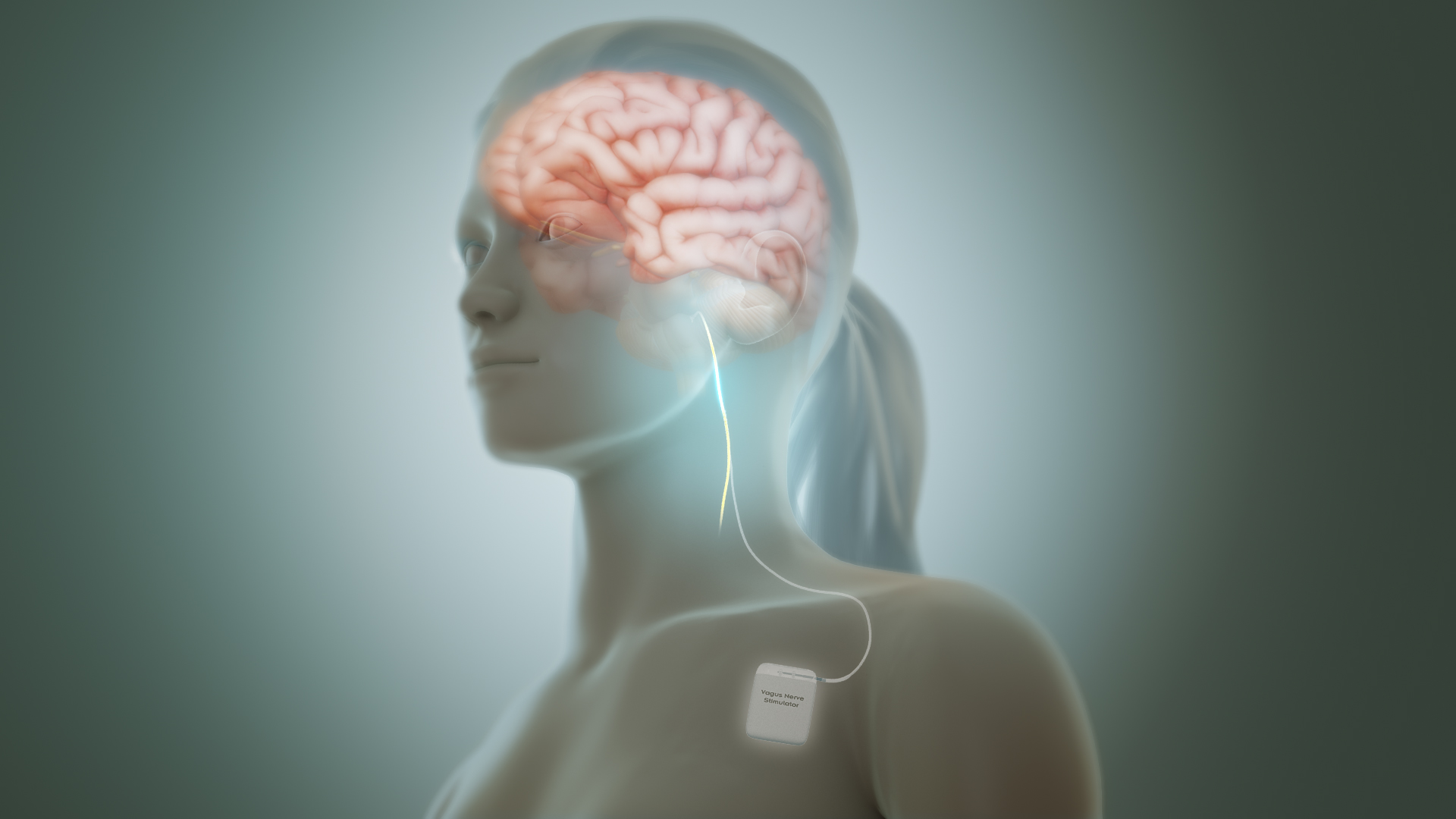Neuromodulation refers to the use of electrical stimulation or chemical agents to modify the activity of nerve cells in the body. It is a technique used to treat a variety of neurological and psychiatric conditions, including:
- Pain management: Neuromodulation can be used to treat chronic pain, such as back pain, neck pain, and headache, by altering the activity of nerves that transmit pain signals.
- Movement disorders: Neuromodulation can be used to treat movement disorders, such as Parkinson’s disease, tremors, and dystonia, by altering the activity of the brain and spinal cord.
- Psychiatric disorders: Neuromodulation can be used to treat psychiatric disorders, such as depression, obsessive-compulsive disorder (OCD), and anxiety, by altering the activity of brain regions involved in regulating mood and behavior.
- Epilepsy: Neuromodulation can be used to treat epilepsy by altering the activity of the brain to prevent seizures.
- Urinary and fecal incontinence: Neuromodulation can be used to treat urinary and fecal incontinence by altering the activity of the nerve pathways that control bladder and bowel function.
Neuromodulation can be delivered using a variety of methods, including electrical stimulation, chemical agents, and magnetic fields. The specific method used and the target nerve or brain region will depend on the individual’s condition and the goals of therapy. The global neuromodulation market was valued at $2,480.21 million in 2020, and is projected to reach $4,342.50 million by 2030, growing at a CAGR of 6.2% from 2021 to 2030.
Neuromodulation has shown promise as a safe and effective treatment for a variety of conditions and is considered a valuable tool in the management of complex neurological and psychiatric conditions. However, it should only be used under the guidance of a healthcare professional and can have potential side effects and interactions with other medications. Additionally, the benefits and risks of neuromodulation therapy should be carefully considered and discussed with a healthcare professional to determine the best approach for individual needs.
What are some examples of neuromodulation?
Examples of neuromodulation include:
- Electrical stimulation (e.g. deep brain stimulation, vagus nerve stimulation)
- Chemical stimulation (e.g. administration of drugs such as dopamine, serotonin)
- Magnetic stimulation (e.g. transcranial magnetic stimulation)
- Optogenetics (using light to control neural activity)
- Acoustic stimulation (e.g. transcranial ultrasound)
These techniques aim to alter the activity of neurons in specific regions of the brain, either to treat neurological or psychiatric disorders or to enhance brain function.
Download Free Sample PDF: https://www.alliedmarketresearch.com/request-sample/1489
What is neuromodulation technology?
Neuromodulation technology refers to a set of techniques and devices that use electrical, chemical, magnetic, or other forms of stimulation to modify the activity of neurons in the brain. The goal of neuromodulation technology is to change the signaling patterns in the nervous system, either to treat disorders, relieve symptoms, or enhance brain function.
Examples of neuromodulation technologies include:
- Deep brain stimulation (DBS)
- Vagus nerve stimulation (VNS)
- Transcranial magnetic stimulation (TMS)
- Transcranial electrical stimulation (tES)
- Spinal cord stimulation (SCS)
- Sacral nerve stimulation (SNS)
These techniques are used in various neurological and psychiatric disorders such as Parkinson’s disease, depression, chronic pain, and epilepsy.
What is the purpose of neuromodulation?
The purpose of neuromodulation is to alter the activity of nerve cells in the body to treat a variety of neurological and psychiatric conditions. It involves the use of electrical stimulation, chemical agents, or magnetic fields to modify nerve activity in targeted areas of the body.
The specific goals of neuromodulation will depend on the individual’s condition, but some of the most common uses include:
- Pain management: To reduce the intensity of chronic pain, such as back pain, neck pain, and headache, by altering the activity of nerves that transmit pain signals.
- Movement disorders: To treat movement disorders, such as Parkinson’s disease, tremors, and dystonia, by altering the activity of the brain and spinal cord.
- Psychiatric disorders: To treat psychiatric disorders, such as depression, obsessive-compulsive disorder (OCD), and anxiety, by altering the activity of brain regions involved in regulating mood and behavior.
- Epilepsy: To treat epilepsy by altering the activity of the brain to prevent seizures.
- Urinary and fecal incontinence: To treat urinary and fecal incontinence by altering the activity of the nerve pathways that control bladder and bowel function.
Overall, the goal of neuromodulation is to improve the symptoms of a variety of conditions and improve quality of life for individuals. It is important to note that neuromodulation should only be used under the guidance of a healthcare professional and can have potential side effects and interactions with other medications. The benefits and risks of neuromodulation therapy should be carefully considered and discussed with a healthcare professional to determine the best approach for individual needs.
𝗖𝗼𝗻𝘁𝗮𝗰𝘁:
David Correa
5933 NE Win Sivers Drive
#205, Portland, OR 97220
United States
USA/Canada (Toll Free): +1-800-792-5285, +1-503-894-6022
UK: +44-845-528-1300
Hong Kong: +852-301-84916
India (Pune): +91-20-66346060
Fax: +1(855)550-5975
help@alliedmarketresearch.com


